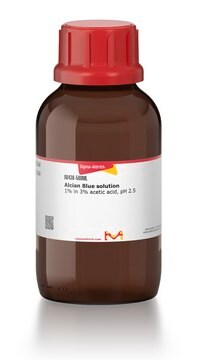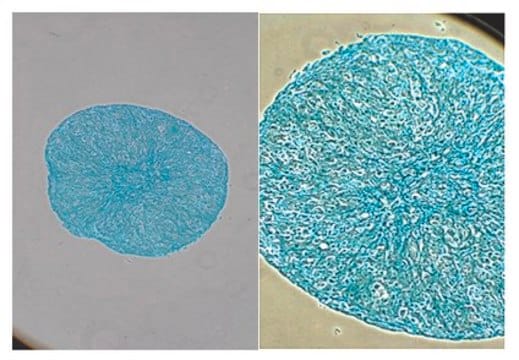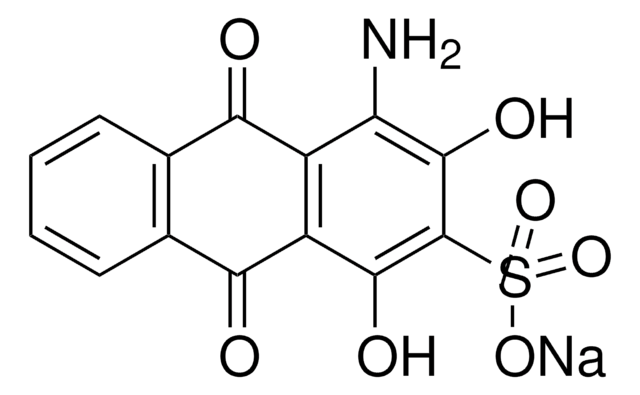Key Documents
A3157
Alcian Blue 8GX
Dye content, ≥50%, certified by the Biological Stain Commission, powder
Synonim(y):
Alcian Blue, Ingrain Blue 1
About This Item
Polecane produkty
product name
Alcian Blue 8GX, certified by the Biological Stain Commission
klasa czystości
certified by the Biological Stain Commission
Poziom jakości
Postać
powder
skład
Dye content, ≥50%
metody
microbe id | staining: suitable
kolor
dark blue
rozpuszczalność
water: 1 mg/mL, blue
εmax
195-400 at 617-630 nm
Zastosowanie
diagnostic assay manufacturing
hematology
histology
temp. przechowywania
room temp
ciąg SMILES
[Cl-].[Cl-].[Cl-].[Cl-].CN(C)C(\SCc1ccc2c3nc(nc4n5[Cu]n6c(nc7nc(nc5c8cc(CS\C(N(C)C)=[N+](\C)C)ccc48)c9ccc(CS\C(N(C)C)=[N+](\C)C)cc79)c%10ccc(CS\C(N(C)C)=[N+](\C)C)cc%10c6n3)c2c1)=[N+](/C)C
InChI
1S/C56H68N16S4.4ClH.Cu/c1-65(2)53(66(3)4)73-29-33-17-21-37-41(25-33)49-57-45(37)62-50-43-27-35(31-75-55(69(9)10)70(11)12)19-23-39(43)47(59-50)64-52-44-28-36(32-76-56(71(13)14)72(15)16)20-24-40(44)48(60-52)63-51-42-26-34(18-22-38(42)46(58-51)61-49)30-74-54(67(5)6)68(7)8;;;;;/h17-28H,29-32H2,1-16H3;4*1H;/q+2;;;;;+2/p-4
Klucz InChI
CKLBXIYTBHXJEH-UHFFFAOYSA-J
Szukasz podobnych produktów? Odwiedź Przewodnik dotyczący porównywania produktów
Zastosowanie
Działania biochem./fizjol.
Przydatność
Kod klasy składowania
11 - Combustible Solids
Klasa zagrożenia wodnego (WGK)
WGK 3
Temperatura zapłonu (°F)
Not applicable
Temperatura zapłonu (°C)
Not applicable
Środki ochrony indywidualnej
Eyeshields, Gloves, type N95 (US)
Certyfikaty analizy (CoA)
Poszukaj Certyfikaty analizy (CoA), wpisując numer partii/serii produktów. Numery serii i partii można znaleźć na etykiecie produktu po słowach „seria” lub „partia”.
Masz już ten produkt?
Dokumenty związane z niedawno zakupionymi produktami zostały zamieszczone w Bibliotece dokumentów.
Klienci oglądali również te produkty
Produkty
To meet the great diversity of protein analysis needs, Sigma offers a wide selection of protein visualization (staining) reagents. EZBlue™ and ProteoSilver™, designed specifically for proteomics, also perform impressively in traditional PAGE formats.
Nasz zespół naukowców ma doświadczenie we wszystkich obszarach badań, w tym w naukach przyrodniczych, materiałoznawstwie, syntezie chemicznej, chromatografii, analityce i wielu innych dziedzinach.
Skontaktuj się z zespołem ds. pomocy technicznej








